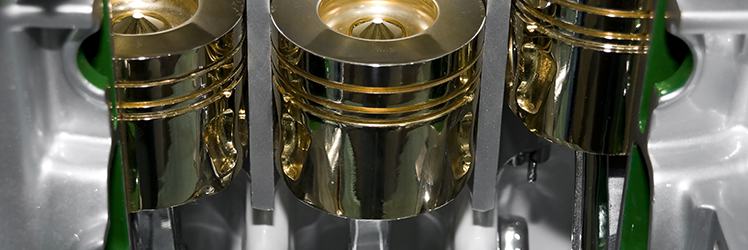11/09/2017 Event
SAE 16 OILS THAT CAN BE STRETCHED TO THE LIMIT

Developing SAE 16 engine oils poses something of a challenge for manufacturers. Want to know why? Well, let Total put you in the picture.
Innovation in the automotive industry is unstoppable. The world of cars is demanding in the extreme and is moving forward at mind-boggling speed. With each new development by carmakers, new products that fit the bill are very much in demand. This is more or less what is happening with the Society of Automotive Engineers' new SAE 16 grade, which you might have heard of.
Why exactly has the SAE classification been expanded to include the new grade? This is a response to increased use of new, smaller engines that have less clearance and have parts made of new alloys. In addition, in the case of gasoline engines, the compression ratio has risen from 11:1 to 15:1.
The Ever-Shrinking Engine
The smaller engines currently being developed are around 600cc, three-cylinder engines with turbochargers where very high air-fuel ratios are pushed to the limit, with injection control to spray fuel at extremely high pressure. This means that the fuel is burned more cost-effectively, improving energy efficiency.
All of this poses new challenges for the oils used under these extreme conditions, making in-depth, wide-ranging knowledge of how friction works critical. It is necessary to understand how it is produced and under what conditions. What’s more, the lubricant will have to be suitable for use with a wide variety of materials, both new and more conventional ones.
As a result, less viscous oils are needed. Up to now, the most fluid PAOs available were SAE xx20 and SAE xx30 grades (where xx equals 0 or 5). They ensure the crankshaft bearings were being lubricated appropriately.
More Fluid Oils
But with clearance shrinking and stress and temperatures rising, there is a need for more fluid oils still capable of creating a protective film for parts that will not break down.
The greater fluidity means it is also necessary to more strictly control the oil's actual ability to create the film and pay close attention the boiling and flash points and evaporation temperature. The molecules may be natural or synthetic, but in both cases will be brand-new. For this reason, considerable R&D is vital to identify new substances that offer the required properties.
That said, the demand for new products that can meet the challenges posed by new engines doesn’t stop there. Also needed are new anti-wear additives, detergents and friction modifiers that can withstand these new conditions without being negatively affected by the temperatures, stress or reduced clearance between the metal surfaces that the oil now has to squeeze through. Plus, the additives will have to be compatible with the lubricant base oils.
This is how new lubricants are developed. And what carmakers are looking for is longer engine life, improved fuel efficiency, higher mileage between oil changes, and compatibility with biofuels and exhaust systems.
To address these requirements, Total has a large team of multidisciplinary research scientists working in the field of lubricants, and also collaborates with large multinationals and universities to develop new products.
In addition, these experts have now gone one step further and are currently developing new, even lower (12, 8, and 4) viscosity grades for high-temperature conditions to reduce fuel consumption and comply with emissions standards. The aim is to provide you with top-quality lubricants to look after your vehicle the way it deserves.

